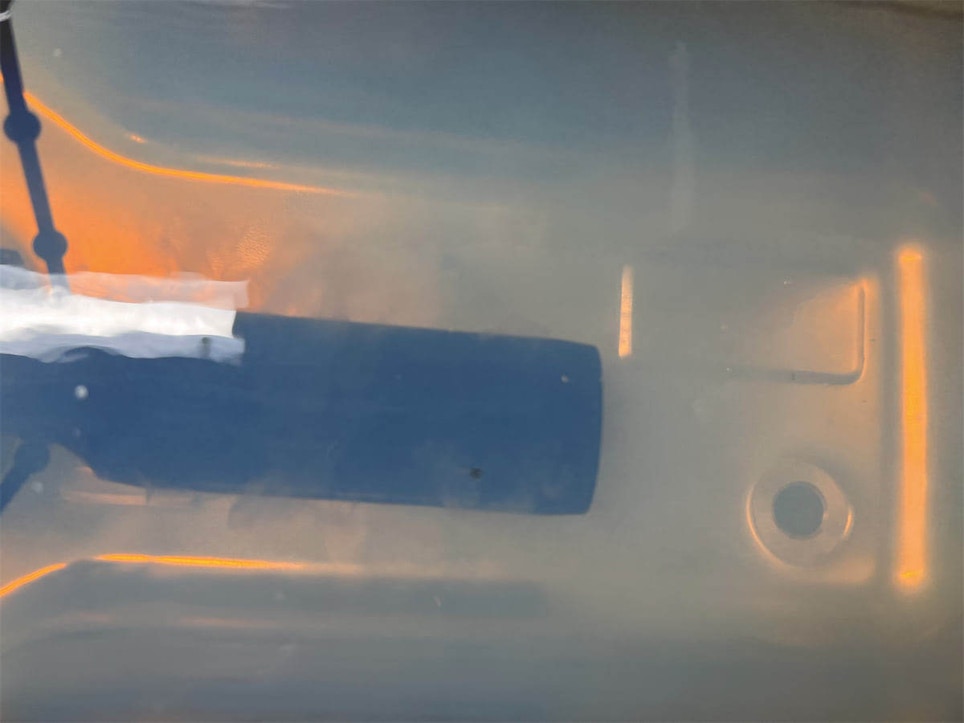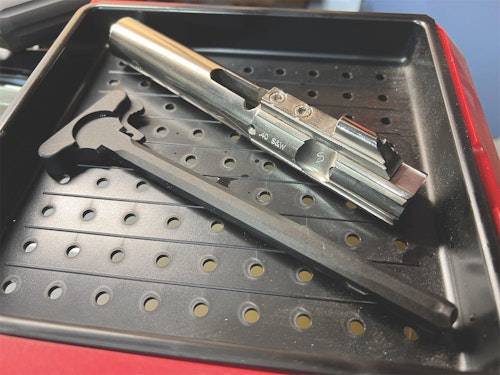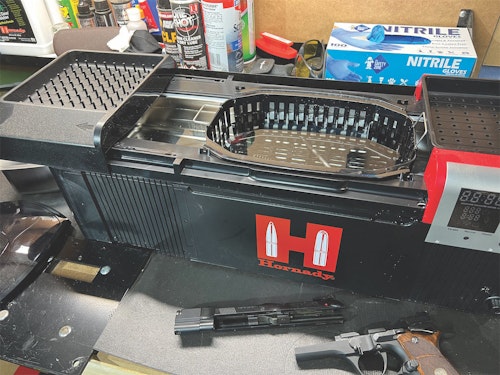I was in a local gun store recently and was surprised to learn that many customers were asking if the store offered gun cleaning services. It seems there are a lot of people out there who like to shoot but don’t want the trouble of cleaning their own guns. Is there a demand that you might be able to meet? According to him, there is, and ultrasonic cleaners may be the solution.
Ultrasonic cleaners are not new. They have been used in industrial applications since the 1950s. It used to be too expensive to purchase one for private use, but companies like Lyman, RCBS, Hornady (and others) have been making them at price points the average person can now afford. They are not a cure-all, but they do have a place in the market that might benefit your business. Let’s take a look at what they are and how they work.
The Basics
Ultrasonic cleaners use immersion in liquid to clean. Typically, water is used with an added cleaning agent based on what is being cleaned and what type of contaminants need to be removed. The main visible feature of ultrasonic cleaners is the holding tank. There are various sizes available based on need.
I’ve used several models but have settled on two offered by Hornady — the 2-liter Lock-N-Load unit for smaller items and the 9-liter Hot Tub Sonic Cleaner for oversized items like a 16-inch AR upper. Other brands offer similar models to the smaller one, but to my knowledge Hornady is the only one with the larger one.
Attached to this tank are one or more transducers that produce the ultrasonic waves (or vibrations) that travel through the liquid. You’ll also find that they have timers that automatically shut them off after the selected time. Most have built-in heaters for added capability. However, it’s not the heat that does the work. It’s the bubbles.
The Power of Bubbles
The water looks calm to the naked eye while the unit is operating, but the reality is more than it appears. The transducers create waves that travel through the liquid. You can think of them as sound waves traveling at ultrasonic (below the level of human hearing) frequencies. Unlike waves on an ocean, these permeate the liquid and randomly come from all directions. Where the waves collide, tiny microscopic bubbles form. Essentially, the waves tear the water molecules apart, creating a small air pocket that immediately collapses to form a water molecule again. This is known as cavitation.
When we think of bubbles popping, the image is of a soap bubble softly floating through the air then gently disappearing with a drop of liquid falling to the ground. When ultrasonic bubbles collapse, the action is quite violent. The mini implosions produce shock waves of enormous pressure and heat, but their small size prevents them from damaging most surfaces. Ultrasonic waves include a spectrum of frequencies, and some industrial cleaners allow the frequency to be changed. Lower frequencies produce larger bubbles with more cleaning power, but higher ones make smaller bubbles capable of getting between parts and into the tiny crevices and crooks where brushes and scrapers can’t reach. Units available for gun cleaning are not adjustable. The manufacturer has already determined the optimum frequency and pre-set it for the customer’s convenience.
As an aside, these cavitation bubbles are the same as what happens when a boat propeller spins too quickly in the water. The shearing of the propeller forces air pockets to form then collapse. I’ve included a picture of a boat propeller that has experienced prolonged cavitation to show the effects. You can see that it is strong enough to cause pitting on its surface. (Propeller cavitation is also a dead giveaway to sonar operators if you happen to operate your nuclear-powered sub too fast, as I’m sure you remember from The Hunt for Red October).
I’m confident that you’re asking if it is safe to use on guns. After all, if it causes pitting on a boat propeller, what will it do to the polymer frame of a Glock? Never fear; the cleaning action works on contaminates without causing damage. You can clean steel, aluminum and hard polymers without worry.
Now that you understand how these cleaners work, let’s look at how they can be used.
Brass
Ultrasonic cleaning of brass works well if you add suitable cleaning agents to the water. There’s some debate about what to add to the water. To date, I’ve only used the factory (Hornady) cleaning solution and have been happy with the results. Other companies offer their proprietary formulas. I’ve even read different combinations of household cleaners that can be used. The brass will not shine as if tumbled in media, but they will be clean enough to reload.
Guns
If there’s one main reason I own ultrasonic cleaners, it’s for cleaning guns and gun parts. They are the best method for cleaning that I’ve come across. I usually tend my guns as usual then use the sonic cleaner to find out how much dirt, grime, lubricants and carbon are still on the guns. The first time this is tried will surprise you as small clouds of dirt and debris form in the clear liquid.
Jewelry
Ultrasonic cleaners are great for all metal pieces. As with brass, they will not polish. That’s not what they are designed for, but they will remove all contaminates. You can then polish them without grinding the dirt and microscopic particles into them. Check with a jeweler before cleaning precious stones. Some may not handle the cleaning action.
Other Miscellaneous Items
I’ve cleaned countless items including screws, nuts, taps and dies. I’ve even used them to clean my tools after use. If it’s a hard surface, it should be safe. Don’t use it to clean electronics, delicate items, or anything like optics. The abrasive action could damage them.
Drying
It’s a given that anything cleaned in a liquid will need to be dried appropriately afterward. There are many methods. Some people use a cookie sheet in the oven at low temperatures. Others set the items on towels in the sun to dry. I even know someone who uses a hairdryer. It works. Another option you can capitalize on is to offer one of the available specialty dryers. They look and work like food dehydrators. Items are placed inside, and hot air is circulated to remove the moisture.
The Bottom Line
The versatility of ultrasonic cleaners is their most significant advantage. Almost anything solid that can fit inside the tank can be cleaned.
So, for the people who hate to clean their guns, ultrasonic cleaners may be the answer, and that creates a sales opportunity for your business. I’ve mentioned one brand, but most reloading companies offer their own ultrasonic cleaners, dryers, and specific cleaning solutions. Which brand you offer is up to you.
The point is to meet the customer’s needs by selling the right products to solve their problems. You might just find ultrasonic cleaning and the related accessories will become an essential category for your business.








